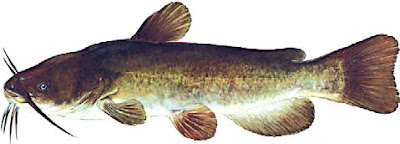Eurasian Milfoil
What is it and why are we concerned?
Eurasian milfoil is an exotic invasive submersed perennial. It reproduces both vegetatively and, less commonly, sexually (seeds). Rhizome division, budding and fragmentation are examples of vegetative reproduction. A single piece of fragmented Eurasian milfoil can multiply into 250 million new plants in one year!
Large masses of Eurasian milfoil can lead to flooding and interfere with fishing, swimming and boating. Eurasian milfoil mats can increase mosquito habitat and decrease oxygen levels.
History of Milfoil
Eurasian water milfoil was first introduced into the United States through the aquarium trade. The first documented identification of Eurasian water milfoil in open water in the United States was in 1942 from a pond in Washington D.C. By 1950 the species was into the Midwest in Ohio and was also found in western states such as Arizona and California. Eurasian water milfoil is now found throughout the continental United States with the exception of the northern Great Plains region and Maine.
How it Spreads
Eurasian water milfoil has spread through accidental and intentional introductions. Pond owners intentionally introduced the plant into their ponds to provide fish habitat. Since Eurasian water milfoil is capable of reproducing by vegetative means it is likely that the spread into most new bodies of water has been by fragments. Aquatic equipment which was used at Eurasian water milfoil infested waters may have fragments attached; these fragments can be transported to other waters and start a whole new infestation. This plant can stay alive for weeks out of water if kept moist.
Identifying Milfoil
(Myriophyllum sibiricum and Myriophyllum spicatum)
Water milfoil (or milfoil) occurs in patches that tend to crowd out all other growth. Feather-like leaves are finely dissected to midrib and whorled around the hollow stem at intervals along the entire length of the plant. Milfoil stays submerged except for a stalk of tiny flowers, which can extend above the surface. All milfoil species are easily identified as a group because of their distinctive feather-like leaves, but individual species are hard to differentiate from one another. Numerous species of milfoil are common throughout the U.S... Worldwide, the genus (myriophyllum) has 45 species in Europe, Asia, India, Japan, North and Central America and North Africa. Milfoil can winter over in frozen lakes, thrive in warm pond waters, and live in acidic and calcium rich waters, slow moving waters of lakes and ponds and some rivers. Milfoil is found in a variety of sediments, light levels, temperatures, and depths up to 20 feet. Eurasian Milfoil is an exotic plant, introduced to the U.S. by the aquarium industry. It is rapidly becoming a major nuisance throughout North America. It is capable of rapid dispersion, principally by fragmentation of plant parts. Each fragment is capable of growing roots and developing into a new plant. Eurasian Water milfoil is quite competitive with native species and may completely dominate a plant community within a few years after introduction. Due to the plant's ability to form dense growth, water use activities may become severely impaired.
REFERENCES:
Colette C. Jacono and M.M. Richerson. 15 October 2008. Myriophyllum spicatum. USGS
Nonindigenous Aquatic Species Database, Gainesville, FL.
http://nas.er.usgs.gov/queries/FactSheet.asp?speciesID=237
Eurasian Watermilfoil. 5 Nov 2003. Invasive.org.
http://www.invasive.org/eastern/biocontrol/6EurasianMilfoil.html
Eurasian Water Milfoil (Myriophyllum spicatum). 18 August 2008. Wisconsin
























